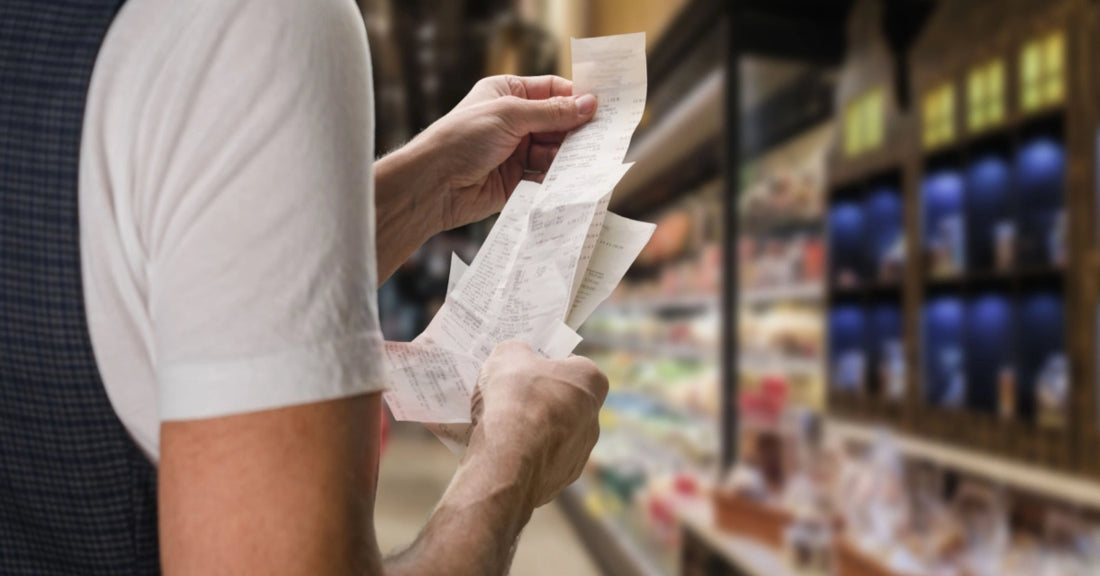Fuel prices are on the rise once again and food prices will soon follow suit. Our grocery store food prices are directly connected to the current energy crisis that much of the world is experiencing. Fuel is needed to move food from farm to store, often being moved from one country or state to another by sea, land, rail, and air. The further our food travels to get to our plate, the more fuel it takes, and the grocery store prices must absorb the fuel price increases. Building Personal Food System Resilience amid these uncertain times is key to weathering the economic storm that is upon us.
Here are 4 tips for building Personal Food System Resilience
1. Community Connections
The first key to building food system resilience in a fast-changing world is to connect with your food on a local and community level. Connecting with local farms, growers, and producers cuts down on fuel costs because your food will not be traveling very far to reach your table. Sourcing your food locally also boosts the local economy. Farmers are struggling more than ever under the weight of added full costs, high fertilizer costs delays in shipping, and environmental issues such a drought and fires. Buying local helps the local farm and helps you save money in return. Thanks to online resources available, it is quick and easy to find growers in your area.
- Search for local farmers markets, roadside stands, livestock handlers/slaughterhouses, orchards, and u-picks.
- Shop local and prepare to give back to your community as well.
- Perhaps you can plan a plant sale and sell extra plant starts, donate to the local seed bank, or start a seed bank yourself, sell extra produce or eggs, sell herbs, sell home baked bread, or provide honey through beekeeping.
- Find a niche in your community and be active in your community food system.
- Building and supporting community connections will ease the stress of the larger food systems and create a safe landing zone for your own food system
2. Grow your own food
Growing your food has always been a fantastic way to save money at the store. Now with fuel prices on the rise, being able to access food without using fuel will save more money than ever! One key step in growing your own food to save money is planning your garden space out efficiently.
- Use all of your available grow zone days to grow as many crops through the seasons as possible.
- Gardeners in many zones can grow an early spring garden, a spring garden, a summer garden, and even a winter garden!
- Plan on growing a wide variety of fruits and vegetables to help provide as many vitamins and nutrients for your diet as possible.
- Growing a variety of crops throughout several seasons also builds personal food system resilience by providing you with alternate crops to harvest from in case of one crop failure.
- Learn to eat seasonal foods and how to cook them. Many people don’t prefer to grow crops like spinach or kale because of they have had a bad taste experience, however when these crops are grown in the cooler months these crops can take on an entirely different flavor profile and become much sweeter and crisper.
- Study and learn more about succession planting and companion planting. These two growing techniques can help you maximize your growing space and get the most harvest for your space.
- Learn to seed save to further build your food system resilience.
- Heirloom and open pollinated seeds are a wonderful place to start when seed saving.
3. Raise your own protein sources and livestock feed
- Regardless of where you live, raising your own source of protein is possible.
- For apartments that have a patio or outdoor space, quail or rabbits could be an excellent choice for meat and eggs.
- While there are usually restrictions to which animals you are allowed to own in a neighborhood, rabbit, quail and ducks are great additions to the backyard and these three are usually permitted. These can provide meat, eggs or both and are rarely restricted from owning.
- For those who live outside of restricted areas, consider raising smaller animals that are easy to contain and feed such as small dairy goats, ducks, chickens, rabbits, and sheep.
- Growing your own feed for your livestock will also build resilience. Crops like corn, leafy greens, and Sunflowers are easy to grow and can help offset livestock feed prices which are on the rise as well.
- Raising your own sources of protein and livestock feed will help round out your food system giving it and add layer of protection and resilience.
4. Buy stable products in bulk
For the items that are not easily harvested like wheat, sugar, grains, dried beans, etc., consider buying in bulk to reduce prices.
- Bulk items such as wheat berries, sugar and many other grains can be stored for many years when stored properly.
- Many stable items such as wheat and sugar are experiencing global market interruptions which could cause prices on these valuable stables to rise soon.
- Stocking up on stables and learning to cook from scratch will save money and add another layer to your long-term food system resilience.
While food prices continue to rise around us, we can take some simple steps toward building a personal food system that is resilient to the ever-changing economic trends. Connecting with food sources on a local community level, learning to grow our own food efficiently, raising our own sources of proteins, and storing stable foods in bulk are all simple ways to help us save money on food and build a food system that is resilient. Working together as a community we can help others do the same.
Blessings of Bounty – Amber Jouben
Heritage Hollow Homestead
